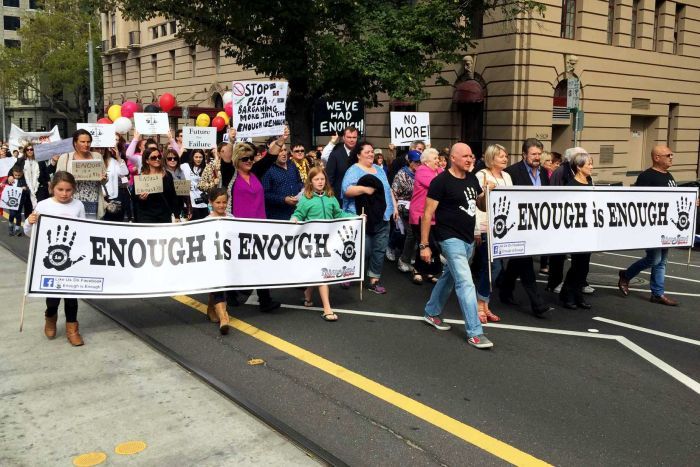RIO DE JANEIRO, BRAZIL – For each of the hundreds of thousands of demonstrators marching in the streets of Brazil, Chile, Bolivia, Hong Kong, the US and, increasingly, in other countries and cities large and small, the familiar parental cry, “enough is enough” must be ringing in the demonstrator’s ears.
While the sparks that ignite their demands often appear different – the rise in public transportation costs in Chile, the probably ‘fixed’ election in Bolivia, the education and environmental policies of Bolsonaro and fear of his attempt to create a dictatorship, the passion for and against the Trump impeachment – there is more similarity than difference.

As the Guardian newspaper wrote, “…a common cause for this discontent is: stagnating middle classes, stifled democracy and the bone-deep conviction that things can be different – even if the alternative is not always clear.”
This view is echoed by NY Times columnists Max Fisher and Amanda Taub: “So while this may look like the era of people power, it is maybe more accurate to describe it as an era of angry frustration.”
Even with demonstrations, reported by Folha newspaper to have included 900,000 Brazilians in 204 cities, squares and university campuses and in the US, where some four million Americans took to the streets for Women’s Marches, to protest the planned repeal of Obamacare, what the results will be are vague at best.
Wrote David Leonhardt in the NY Times: “The size of the crowds, especially compared with Trump’s inauguration, reinforced the fact that most Americans rejected Trumpism. The marches also helped inspire the so-called resistance movement, which in turn created a network of dedicated activists.”
Dedicated activists? Perhaps. In today’s world of social media, it is relatively easy to motivate thousands of people to take to the streets and display their anger, but how dedicated they are is challenging to measure.
Politicians certainly uneasily listen to the noise, make promises, and even some demanded changes (Chileans’ fury forced the government to back off the rise in public transportation prices, and Obamacare is still a popular US program) but these advances are mostly seen as crumbs from the tables of the elite.
In a chant headlined piece, ‘1, 2, 3, 4, Trump Can’t Rule Us Anymore’ by NY Times columnist Michelle Goldberg, Democratic presidential front-runner Elizabeth Warren is quoted as saying: “One of the reasons we’re seeing less protest is that protest is being seen as the beginning of activism and political involvement rather than being the end.”
This quasi-optimistic belief in the possibility of the power of democracy to put things right is hopeful but certainly not universally held.
With all this unrest in the world, the question we have to ask is when the ‘stagnating middle classes’ will decide that they have had enough stagnation, enough of water cannons and rubber bullets and enough unfulfilled promises of change?
When will enough be enough, or too much?
Despite the similar forces driving these demonstrations, the histories and popular cultures of the different countries will certainly affect the outcomes.
What will happen in the US if Trump is impeached in the House of Representatives but, just as likely, not convicted in the Senate, and therefore stays in office for the rest of his term, or even re-elected in 2020 for another four years?
According to the Guardian, one super-right wing Republican state representative, Matt Shea, has warned “US Civil War is coming” and opined that he is going to buy a firearm, just in case.
What will happen here if Bolsanaro continues to try and enact repressive legislation and look the other way when he sees corruption? As a close Brazilian twenty-something friend argues, referencing the film ‘Tropa de Elite’; “New laws hardly change anything here because of the long-established culture of ‘jeitinho’ (finding a way around an impediment). Organizing for change, organizing at all, just isn’t a Brazilian thing.”
What will happen in the many countries where the streets are filling with the frustrated and agitated populace whose sound and fury fill the media?
The answer (if there is one) is mixed but hopeful for civil disobedience and non-violence.
Looking at hundreds of campaigns over the last century, Erica Chenoweth, a political scientist at Harvard University, confirms that “civil disobedience is not only the moral choice; it is also the most powerful way of shaping world politics – by a long shot.”
She found that nonviolent campaigns are twice as likely to achieve their goals as violent campaigns. And although the exact dynamics will depend on many factors, she has shown it takes around 3.5 percent of the population actively participating in the protests to ensure serious political change.
An academic study reported in ‘Science’ magazine last year challenges that small percentage.
It reported that the tipping point for change was 25 percent for “contrarians … to convert anywhere from 72 to 100 percent of the population.
This is about a minority trying to change the status quo and succeeding by being unrelenting. By committing to new behavior, they repeatedly expose others to that new behavior until they start to copy it.”
Have we had enough discontent by now to produce real change, to start to overcome the inequality and corruption that is poisoning the possibility of a peaceful world? Has enough become really enough?

